#Historical Facts
Explore tagged Tumblr posts
Text
F/A 18 Super Hornet, loaded for Bear...

68 notes
·
View notes
Text
wanted to post a month old animation i made…
It was based off when historical Aaron Burr fell HARD for a random handsome young man
"In the public room, however, I have been amused for an hour with a very handsome young Dane. Don't smile. It is male!"
-London, 21 December, 1808, The Private Journal of Aaron Burr
#that's also apparently how aaron burr found out abt his sexuality /j#hamilton#hamilton musical#aaron burr#historical facts#animation
257 notes
·
View notes
Text
NSFW Hogwarts in the 1890s Headcanons
Convenient Plot Devices (to make my smut more believable)
(aka Nurse Blainey is a very supportive and progressive witch doctor!)

Every girl over the age of 15 (sometimes earlier) is required to take contraceptive potions as per request by Nurse Blainey who had to deal with horny teenagers and their lack of mind for consequences for too long.
Boys don't have to take them, but can if they are so inclined.
Very reluctantly, the recipe for that potion is taught by Professor Sharp in the Sixth-years' Potions class.
There are potions for every ailment (usually provided by Nurse Blainey), including aftermath soreness or the "potion after" if a witch/wizard forgot to take their contraceptive potion.
There were indeed condoms*, but not every wizard carried them, so the potions and/or a quick disappearing spell had to be used to prevent pregnancies.
*Condoms were usually distributed in barbershops in the late 19th/early 20th century (according to Wikipedia) so I imagine Madam Snelling selling them under the counter in her hair salon.
There is no sex-ed class in Hogwarts, but again, Nurse Blainey is the first to hand out informative literature* or reading recommendations.
The Restricted Section of the library has an entire room filled with erotic fiction, anatomical books and various guides to help out the eager witch or wizard.
*Informative literature included tips and guides for the uterus-bearing population on how to deal with bleeding. As early as 1890, probably even earlier, there was the "invention" of pad-belts/sanitary belts in Victorian England, those were re-usable and I can imagine even easier to use for witches because instead of cleaning them the old-fashioned way, they could just clean them with a swish of their wand. (Read more on the history of menstrual pads here if you're interested.)
Ignatia Wildsmith has seen more horny teenagers making out in front of her Floo flames than people actually using that way of travel.
Ghosts see a lot of things and mostly they don't care about it, unless they are Richard Jackdaw* who likes to stalk those horny teenagers more often than is appropriate.
*Shameless plug: I wrote a smut piece about our favorite horny ghost called The Horny Ghost (how creative).
"Silencio" is the most used spell in the dormitories, boys' and girls' alike.
Hufflepuffs are the only ones who don't have curtains around their beds! But I bet they can think of other devices to get some privacy. Maybe they're masters of the Disillusionment charm!
On that note: only Ravenclaws have their own in-house bathrooms - with actual bathtubs! Slytherins have to leave their common room, and Gryffindors and Hufflepuffs have to walk quite a while to find the nearest bathroom. [Correction: there are bathrooms, one with stalls, one with stalls and bathtubs, in the Gryffindor common room, but only on the girls' side! (Thanks to @mianeryh for pointing that out!)]
But this is a post about HCs, not actual fact/pointing out lazy game design, so I'd like to imagine that all houses have at least one communal bath/bathroom area very close to their dormitories.
*By the way: In the Slytherin, Gryffindor and Hufflepuff common rooms, the girls' dormitories are upstairs, so they have the stairs turning into slides whenever a boy tries to access them, whereas in the Ravenclaw common room, the girls have to go down the stairs and are "only" protected by two suits of armor guarding the way, which in turn makes it easier to sneak past!
Popular make-out places are: the boat-house, the underground harbor, the loft above the Great Hall, the kitchens (poor house-elves), the Prefects' bathroom, the Restricted Section of the library, any dark empty hallway, any empty classroom/storage room, the Undercroft and the Room of Requirement (if they know of them), ...
*Honestly: anywhere is possible in the large castle that is Hogwarts!
Let's talk fashion: we've all seen the HL undergarments of girls and boys, right? Here is an amazing guide by @tamayula-hl about period accurate clothing and their uses in smut writing, very informative!
So based on that I also believe that horny teenagers got tired of all those buttons and layers very quickly and learned spells to make the undressing easier, and/or used "Evanesco" to get rid of clothes entirely (and conjured them back afterwards) - though tbh, I, as a smut writer, don't care too much about how they get naked. They're wizards/witches, they have their ways!
My most used clothing device apart from simple spells: the convenient flap at the front of boys' breeches.

FANFICTION MASTERLIST - KINKTOBER - AO3
#hogwarts legacy#hogwarts legacy headcanons#hogwarts legacy smut#smut headcanons#headcanons#historical facts#hogwarts in the 1890s
473 notes
·
View notes
Text
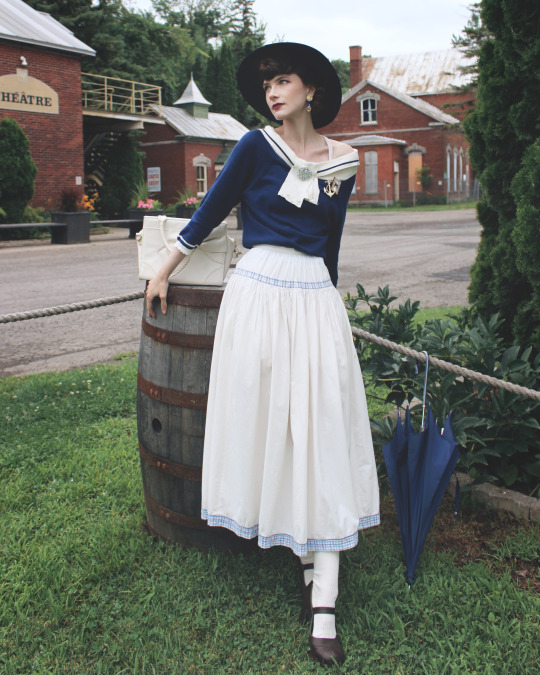
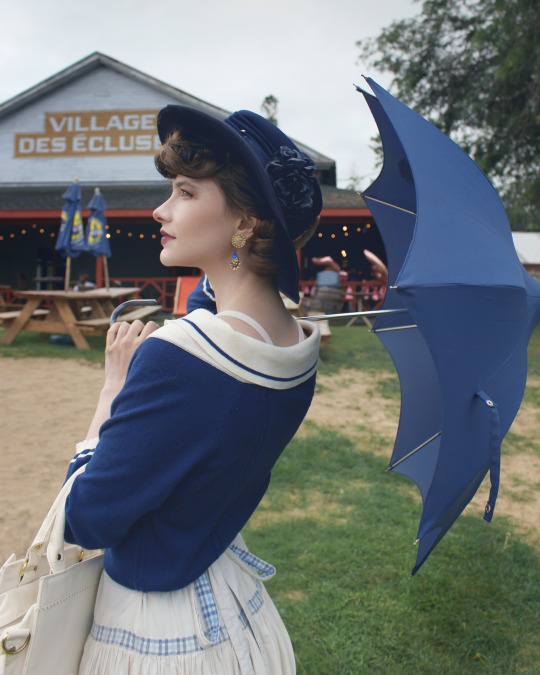
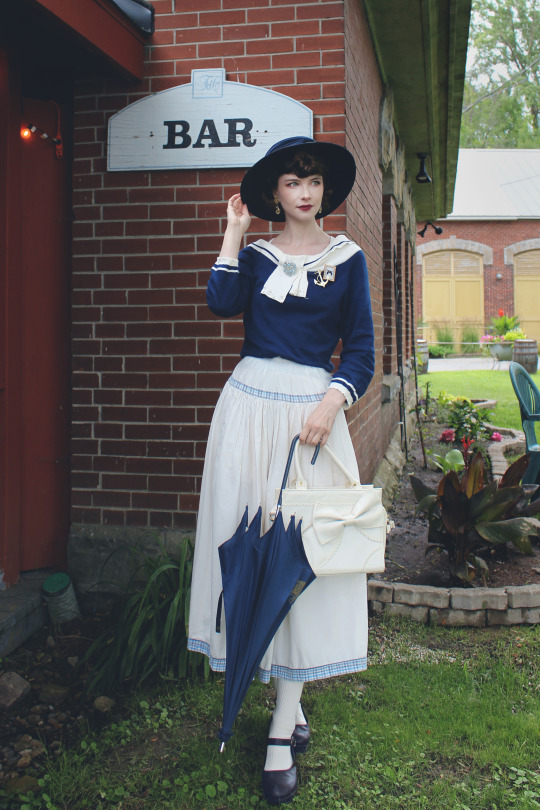
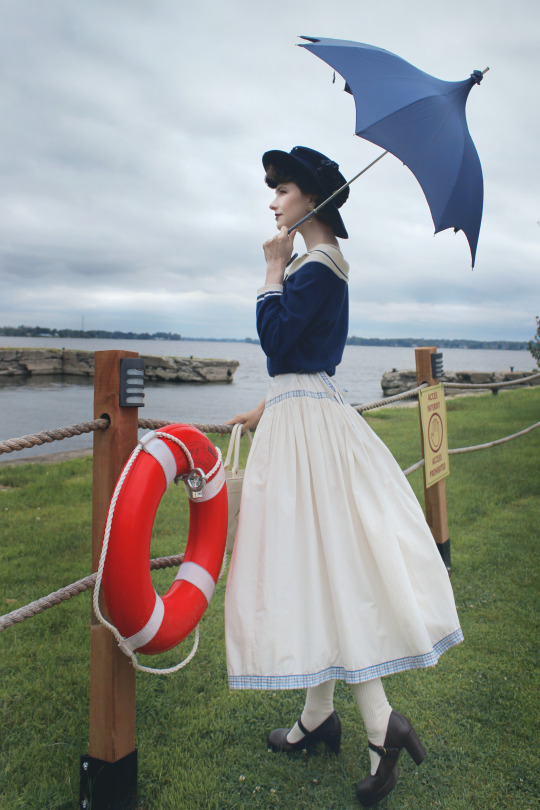
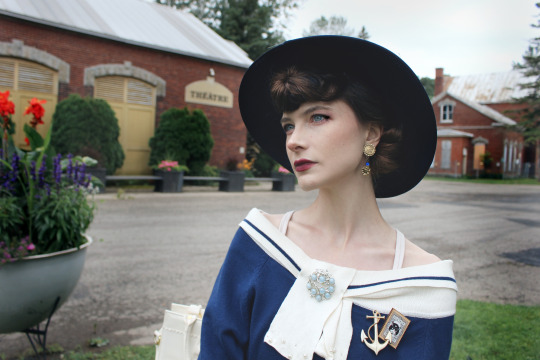
What do you mean, "I am overdressed for the beach"?
Today's little local history lesson that you won't find on any of the Village des écluses or Pointe-des-Cascades websites:
From 1900 to 1959, the Soulanges canal was where most boats would pass through to navigate the Saint-Laurent river in the area South-West of Montreal. At Pointe-des-Cascades, right next to the canal, there was an industrial site where all the maintenance materials for the canal were being built and stored, but when the canal closed in 1959, that site was left abandoned. In 1986, the site got revived, and the industrial buildings were repurposed as a summer theatre, restaurant and boutiques, and the riverside, as a small beach. However, the site was abandoned once again in the late 2010s, only to be picked up again by a new team wanting to restore the 80s resort it once was.
So, how is my 1980's does 1910's nautical outfit? I have also added a picture of my brother and I on that day, two pictures at Ste-Anne-de-Bellevue at sunset (with my sister and a different hat) and a picture of the abandoned "Hotel" (which was never a hotel) at Village des écluses, taken in April, on my Instagram post.
Outfit rundown Skirt: vintage Pink House Top: old Axes Femme Hat: vintage Shoes: old Queen Bee Parasol/umbrella (served both purposes that day): Alice and the Pirates Navy cat stamp brooch: Via Carousel All other jewellery: vintage
#fashion#vintage#vintage style#vintage fashion#vintage aesthetic#80s fashion#historybounding#pink house#jfashion#retro fashion#retro style#historical fashion#historical facts#long hairstyles#axes femme#sailor style#marine style#edwardian fashion#fanny rosie#fannyrosie
698 notes
·
View notes
Text


Still can't believe they used to live at the same time
57 notes
·
View notes
Text
You want to know a LGBTQ+ historical fact that is not centered in the US?
In 2018 the Federal Psychology Council in Brazil stopped classifying being trans as a disorder and it became illegal to promote any type of conversion therapy to trans people.
728 notes
·
View notes
Text
Forgot to mention this about the seal!!

Look closely at his clothing. Ik it is difficult to make out, but he seems to be wearing very striking regalia with even bracelets. And it reminds me of the Byzantine style. I have always imagined him wearing eastern regalia, Armenian mostly for his heritage, and in fact started a couple of drawings just like that, the recreation of this seal being one of them.
I find the Byzantine, Hungarian, Armenian, etc styles to be so gorgeous, so this makes me v happy. I want to see him represented like this more often!! Imagine dear Ridley makes our fantasies come true with a Baldwin biopic and chooses to incorporate this :’)


Art credit: Vasil Goranov (only using it because this was the best example I could find for comparison. Though the one in the 1st is Tsar Simeon I the Great from Bulgaria, who fought Byzantines//The one below is by Tom Tierney, I believe)

Anyways, I thought I’d pointed this out already but it turns out I only pointed it out to myself in my mind and to my brother lol I am of course trying to make a painting of it

#king baldwin iv#the leper king#baldwin iv#baudouin iv#kingdom of heaven#12th century#byzantine#armenian#hungarian#bulgarian#medieval#medieval history#kingdom of Jerusalem#historical facts#historical fashion#crusades#eastern europe#sibylla of jerusalem
35 notes
·
View notes
Text
Okay, guys, fun(not very fun) historical facts about iceland that I have stored in my head that I really want to do something with hetalia with
-in 1922, the Russian communist party sponsored two icelandic students to come to Moscow to help them start their own party. After this they were frequently given money from Moscow to keep themselves going
-during the cod war, Britain sent a navy fleet with their boats to icelandic water to fish. (Overreacting just a little maybe?)
-despite regaining their independence in 1944, after requesting that British and American troops leave, the American troops that were stationed in iceland during the occupation didn't leave until 2006
-when iceland was put into NATO in 1948(or 1949, ill have to double check), it started the first riot to happen in Reykjavik. Safe to say Icelanders weren't happy
ദ്ദി(。•̀ ,<)~✩‧₊
Icelanders and Americans have a rocky relationship, I am unsure how exactly I'm going to put this into my historical hetalia au, but it will happen. Because it's the only thing I'm thinking about.
I love getting sent asks about my headcanons and ideas btw (。•̀ᴗ-)✧
#iceland#kolya talking#historical facts#icelandic history#aph#historical hetalia#aph iceland#aph america#hws iceland#hetalia headcanons
21 notes
·
View notes
Text
Hey everyone!
Check out my latest time lapse video where I bring to life a beautiful coloring page inspired by the incredible Dido Elizabeth Belle.
Dido’s story is truly unique and fascinating. She was born in 1761 to an African mother and a British naval officer, she was raised in England by her great-uncle, the 1st Earl of Mansfield. Despite the rigid social norms of the 18th century, Dido was educated and treated with great care, living an extraordinary life for someone of her background. Her presence is even thought to have influenced progressive changes in British law, contributing to the fight against slavery.
Watch the video to see the highlights of her life while I color this piece dedicated to her legacy. I hope it inspires you as much as it inspired me.
Don’t forget to like, comment, and share!
Stay creative,
Miss Caia
#historical fashion#coloring pages#black coloring pages#coloring sheets#belle#nobility#aristocracy#unlikely#black history art#historical facts#story telling#story time#history lover#history lesson#georgian era#regency#bridgerton#timelapse art#juneteenth2024#juneteenth#black history#black british
26 notes
·
View notes
Note
what was his favourite food and drink?
For food, Sardines, Goebbels reportedly enjoyed sardines, which were a common food in Germany and could evoke memories of simpler times. Then in general trad German dishes, which included hearty meals typical of the era. Part of that also, is soup, his mother made that often for him in his youth. Also Meat Dishes. He likely enjoyed various meat-based dishes, although specific favorites are less frequently mentioned.
As for drinks, wine and beer.
#joseph goebbels#reichblr#ww2 germany#ww2 history#history#1940s#1930s#educational purposes#historical facts
16 notes
·
View notes
Text
USAAF Flight Nurses
So as I’m currently collabing with @major-mads on a fic where our two ocs are flight nurses I thought I do a little post about them as they aren’t well know. I’ve also had a passion for ww2 nurses, including flight nurses and so I’ve really enjoyed sharing my flight nurse knowledge with Mads as we have written our fic. These woman were truly amazing, like many woman during ww2, so I thought I do a little factual post about them.

Before World War II, the U.S. military showed little interest in using aircraft and flight nurses to evacuate wounded soldiers to rear areas. However, the global war forced the US to revolutionise military medical care through the development of air evacuation, which was later known as aeromedical evacuation and flight nurses.
With the rapid expansion of USAAF air transport routes around the world it was made possible to fly wounded and sick servicemen quickly to hospitals far from the front lines. This helped save the lives of many wounded men, and the introduction of flight nurses helped make it possible.
Due to a pressing need for this service, the USAAF created medical air evacuation squadrons and started a rush training program for flight surgeons, medics and flight nurses at Bowman Field, near Louisville, Kentucky.
The increasing need for flight nurses became critical after the Allied invasion of North Africa in November 1942, however many of the nurses at Bowman Field had not finished their training. Nevertheless, the USAAF sent these nurses to North Africa on Christmas Day.
On Feb. 18, 1943, the U.S. Army Nurse Corps' first class of flight nurses formally graduated at Bowman Field.
Due to the C47s used as air evacuation also transported military supplies, they could not display the Red Cross. This meant that without any markings to indicate their non-combat status, these evacuation flights were vulnerable to enemy attacks. For this reason, flight nurses and medical technicians were volunteers.
To prepare for any emergency, flight nurses learned crash procedures, received survival training, and studied the effects of high altitude on various types of patients. They also had to be in top physical condition to care for patients during these rigorous flights.
Eventually, about 500 Army nurses served as members of 31 medical air evacuation transport squadrons operating worldwide. It is a tribute to their skill that of the 1,176,048 patients air evacuated throughout the war, only 46 died en route. Seventeen flight nurses lost their lives during the war.
The Flight Nurses Creed
I will summon every resource to prevent the triumph of death over life. I will stand guard over the medicines and equipment entrusted to my care and ensure their proper use. I will be untiring in the performances of my duties and I will remember that, upon my disposition and spirit, will in large measure depend the morale of my patients. I will be faithful to my training and to the wisdom handed down to me by those who have gone before me.I have taken a nurse's oath, reverent in man's mind because of the spirit and work of its creator, Florence Nightingale. She, I remember, was called the "Lady with the Lamp." It is now my privilege to lift this lamp of hope and faith and courage in my profession to heights not known by her in her time. Together with the help of flight surgeons and surgical technicians, I can set the very skies ablaze with life and promise for the sick, injured, and wounded who are my sacred charges. ...This I will do. I will not falter in war or in peace.

Here are a few of the real flight nurses from ww2 from left upper: Second Lieutenant Elsie S. Ott, upper right: first Lieutenant Suella Bernard.

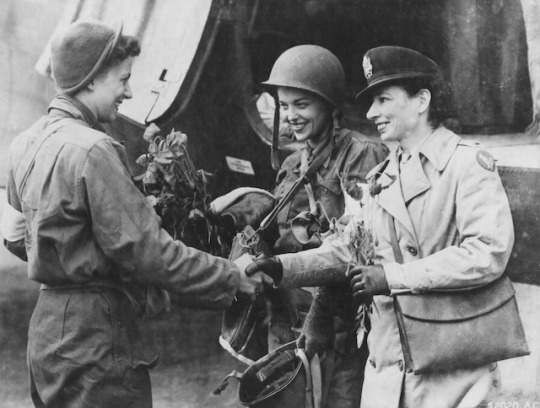
Elsie S. Ott - As the flight nurse on the first intercontinental air evacuation flight, she demonstrated the potential of air evacuation in January 1943. She was an Army nurse who had never flown in an airplane and had no air evacuation training, she successfully oversaw the movement of five seriously ill patients from India to Washington, D.C. This six-day trip would have normally taken three months by ship and ground transportation. For her actions on this historic flight, Ott received the first Air Medal presented to a woman, and she also received formal flight nurse training.
Suella Bernard - On March 22, 1945, two CG-4A gliders landed in a clearing near the bridgehead at Remagen, Germany, to evacuate 25 severely injured American and German casualties. Once the gliders were loaded, C-47 transports successfully snatched them from their landing site and towed them to a military hospital in France. In the second glider, Suella who had volunteered for the mission, cared for the wounded en route. One of the first two nurses to fly into Normandy after the D-Day invasion, Bernard became the only nurse known to have participated in a glider combat mission during World War II. For this mission, she received the Air Medal.
Upper left: first Lieutenant Aleda E.Lutz Upper right: first Lieutenant Mary L. Hawkins

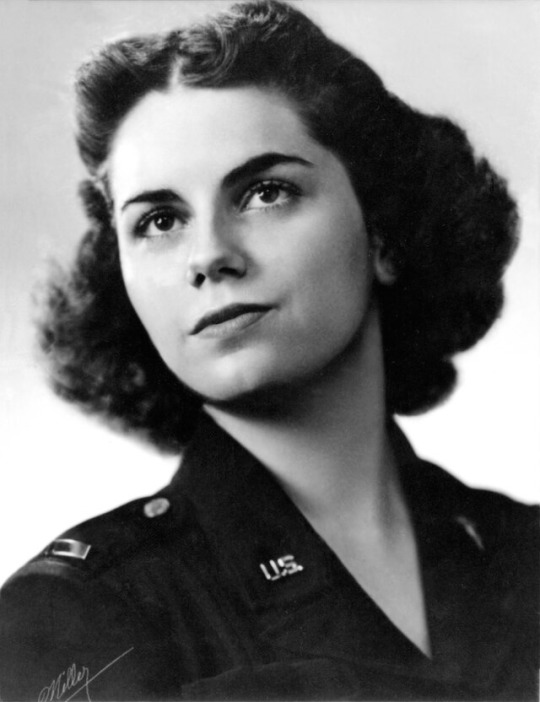
Aleda E. Lutz - One of the most celebrated flight nurses of World War II, she flew 196 missions and evacuated over 3,500 men. In November 1944, during an evacuation flight from the front lines near Lyon, France, her C-47 crashed killing all aboard. Aleda was awarded the Air Medal with four Oak Leaf Clusters, and the Distinguished Flying Cross.
Mary L. Hawkins - On Sept. 24, 1944, she was evacuating 24 patients from the fighting at Palau to Guadalcanal when the C-47 ran low on fuel. The pilot made a forced landing in a small clearing on Bellona Island. During the landing, a propeller tore through the fuselage and severed the trachea of one patient. Hawkins made a suction tube from various items including the inflation tube from a "Mae West." With this, she kept the man's throat clear of blood until aid arrived 19 hours later. All of her patients survived. For her actions, Hawkins received the Distinguished Flying Cross.

I hope you’ve all found this interesting and now have a greater understanding of flight nurses. If you’d like to read a fic on flight nurses please check out my fic ‘On a Wing and a Prayer’ and @major-mads fic ‘A Pair of Silver Wings’ a Masters of the Air collab.

51 notes
·
View notes
Text
Here's something that will mess with your perception of time.
The first Star Wars movie came out a few months before the last time someone was executed via guillotine.
Star Wars: 25 May 1977
Last guillotine execution: 10 September 1977
9 notes
·
View notes
Text
Der Untergang (2004) - Facts and Details I
Here's something starkly different from what I usually post, but I thought about filling the silence of my blog with some tidbits about my favorite movie.

In one of the scenes of this excellent historical drama, we see how, during Eva Braun's letter-monologue to her sister, Adolf Hitler’s (Bruno Ganz) adjutants burn the leader’s personal correspondence. Otto Günsche (Götz Otto, on the right) smokes a cigarette, but upon seeing the leader, reluctantly throws it into the fire.
This directorial choice was dictated by Hitler’s real opinions. In his youth, he was a heavy smoker—he smoked 20 to 40 cigarettes a day—but decided to quit the habit due to financial circumstances. Throughout his career, he was a staunch opponent of smoking. He often expressed concern about the smokers around him, including his lover and later wife, Eva Braun. Although he did not ban smoking in the Wehrmacht ranks, he openly stated his disapproval. A quote from March 2, 1942:
"It is not true that a soldier needs to smoke to survive."
During the height of his party's rule, German doctors conducted the country’s first studies on the harmful effects of smoking, which resulted in funding and later dissemination of the findings. The anti-smoking campaign in Germany lasted throughout the National Socialist rule until the fall of Berlin, depicted in the film.
It is said that even a broken clock is right twice a day. Whatever one may say about the circumstances, the funds for research contributed to the development of medical knowledge on the effects of smoking and were invaluable for the advancement of oncology.


#contentloadingandstuff#history#downfall 2004#movie#movie facts#historical facts#fun facts#world war ii#world war 2#battle of berlin#circa 1945#war drama#der untergang
13 notes
·
View notes
Text
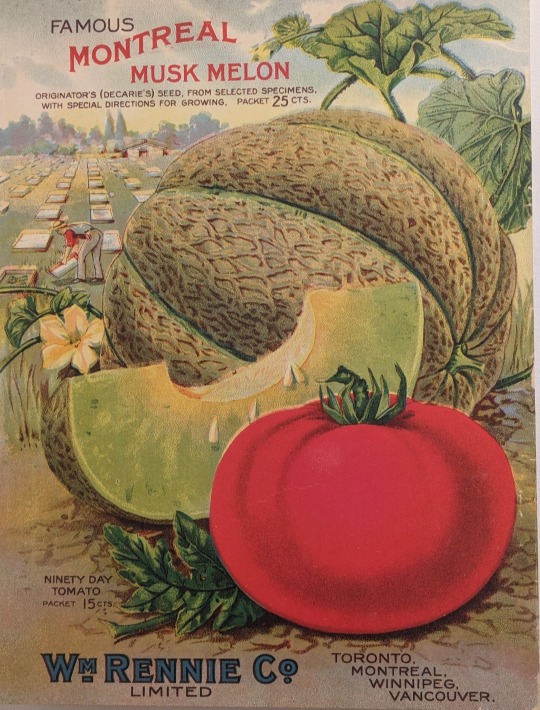
On an August day (see HERE the outfit post), I discovered the Montreal melon during my visit of the Lachine museum, and it became an obsession for the few following days. In the early 20th century, a special kind of melon, called the Montreal melon, was being grown by the Decarie family around the area where the Decarie highway is currently situated. It was a melon really hard to grow and costed a fortune (similarly to those fancy melons in Japan). People from around Canada and the US would import it for its surprising spiced tasted and status symbol. Sadly, due to the urbanisation of Montreal, the difficulty of cultivation and the arrivals of other cheaper imported melons, the Montreal melon almost completely disappeared.
Up until in the 90s, when a man from l'Île-Perrot found some Montreal melon seeds in the US, and revived it. However, it's still extremely rare, and I have yet to try it. Interestingly, during my researches, I discovered that the Île-Perrot cultivator was one of dad's old patients (!!!), so we went to visit him and his wife for more information. Sadly, he doesn't cultivate Montreal melons anymore because it's too much of a pain, but he has created hybrids. The only ones who are still trying to grow the Montreal melon are McGill university (we went to see them, and they told us the squirrels ate all their melons) and the Lachine museum (they had only one).
156 notes
·
View notes
Text
youtube
Jesus is not a retelling of Horus‼️ Jesus is God in Flesh, Alpha and Omega, The creator of the World‼️
#apologetics#jesus christ#christanity#christian faith#historical facts#jesus is god#jesus is the only way#egyptian mythology#ancient egypt#Youtube
8 notes
·
View notes
Text
You want to know a LGBTQ+ historical fact that is not centered in the US?
Homosexuality became legal in Brazil in 1830.
218 notes
·
View notes